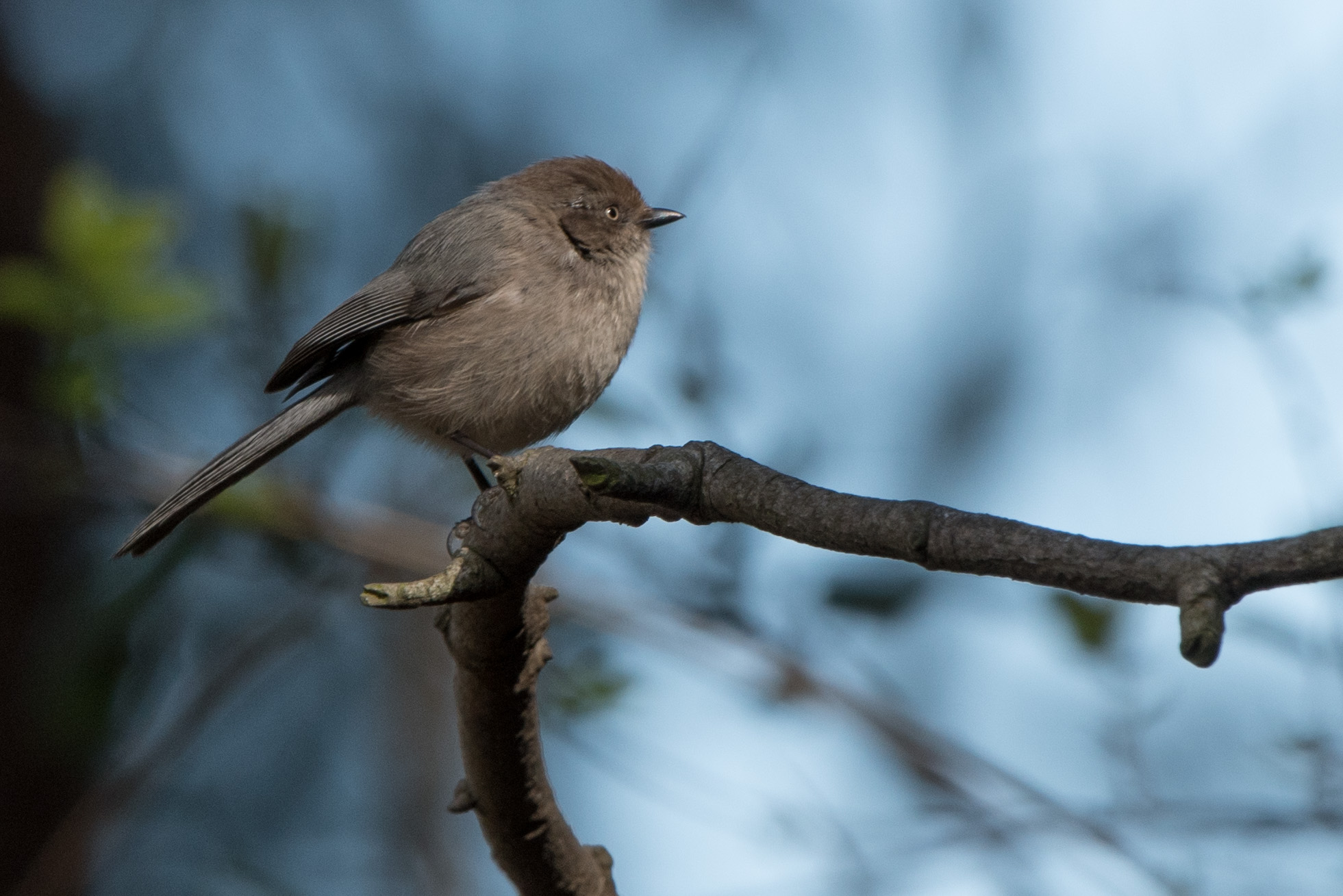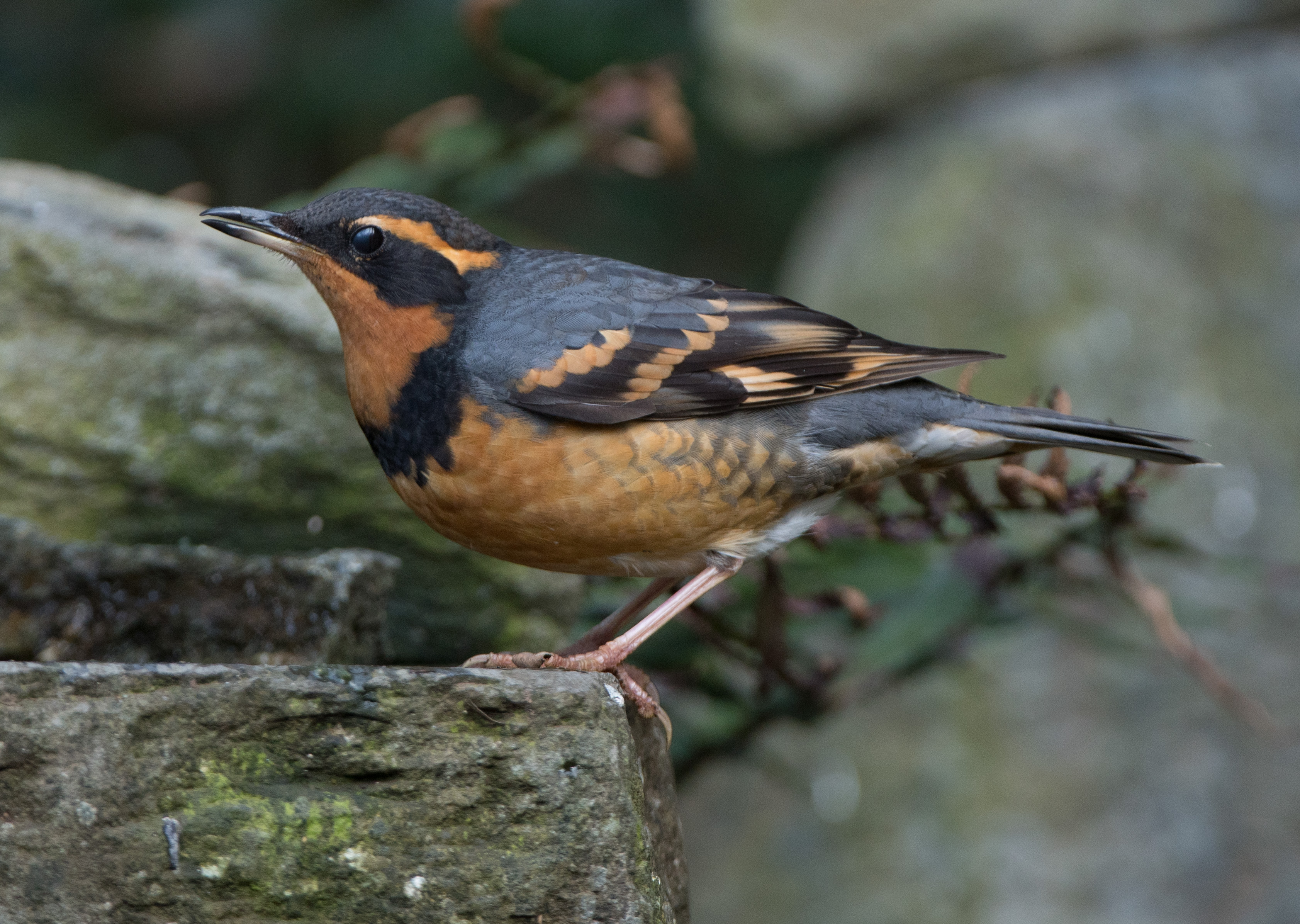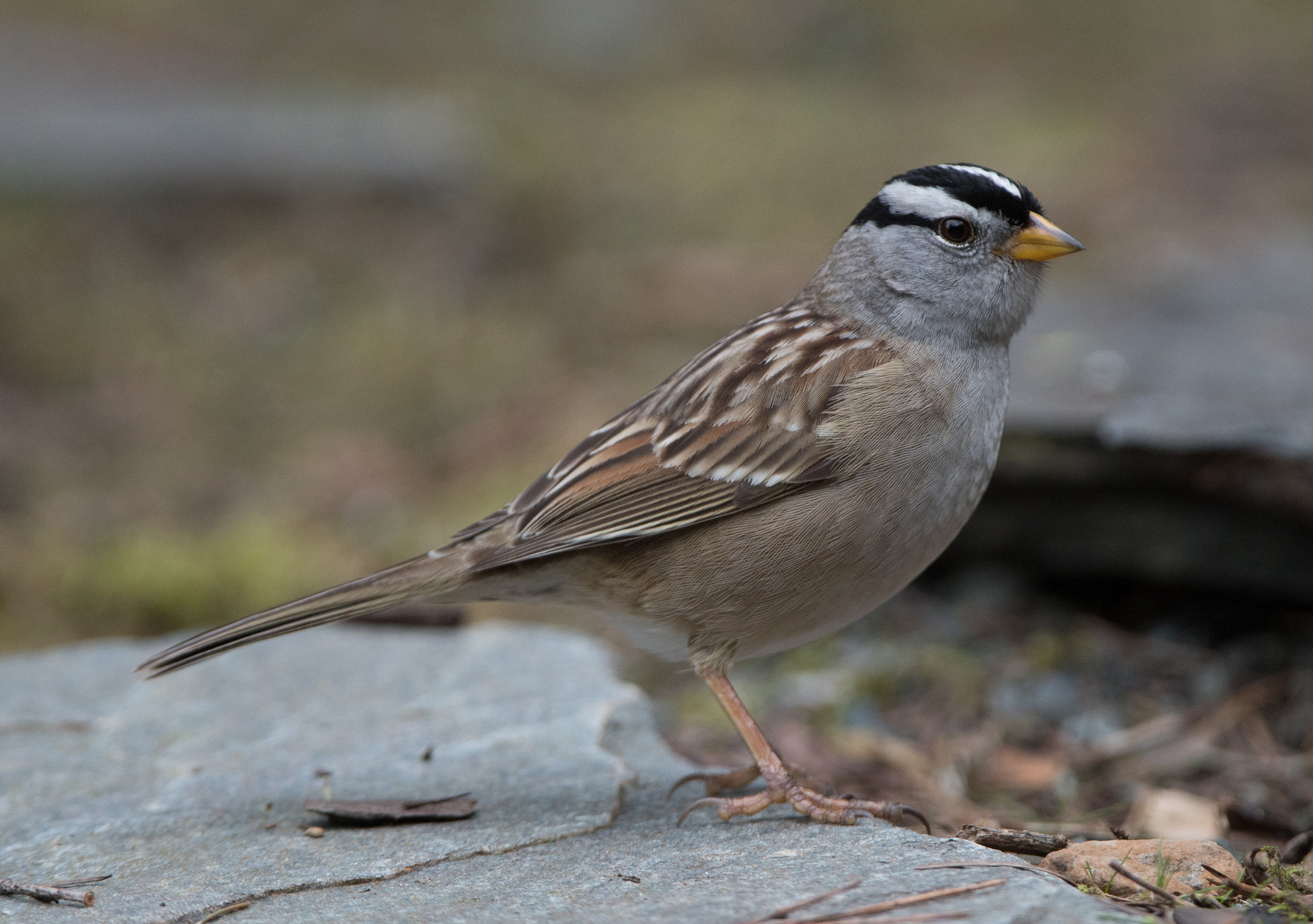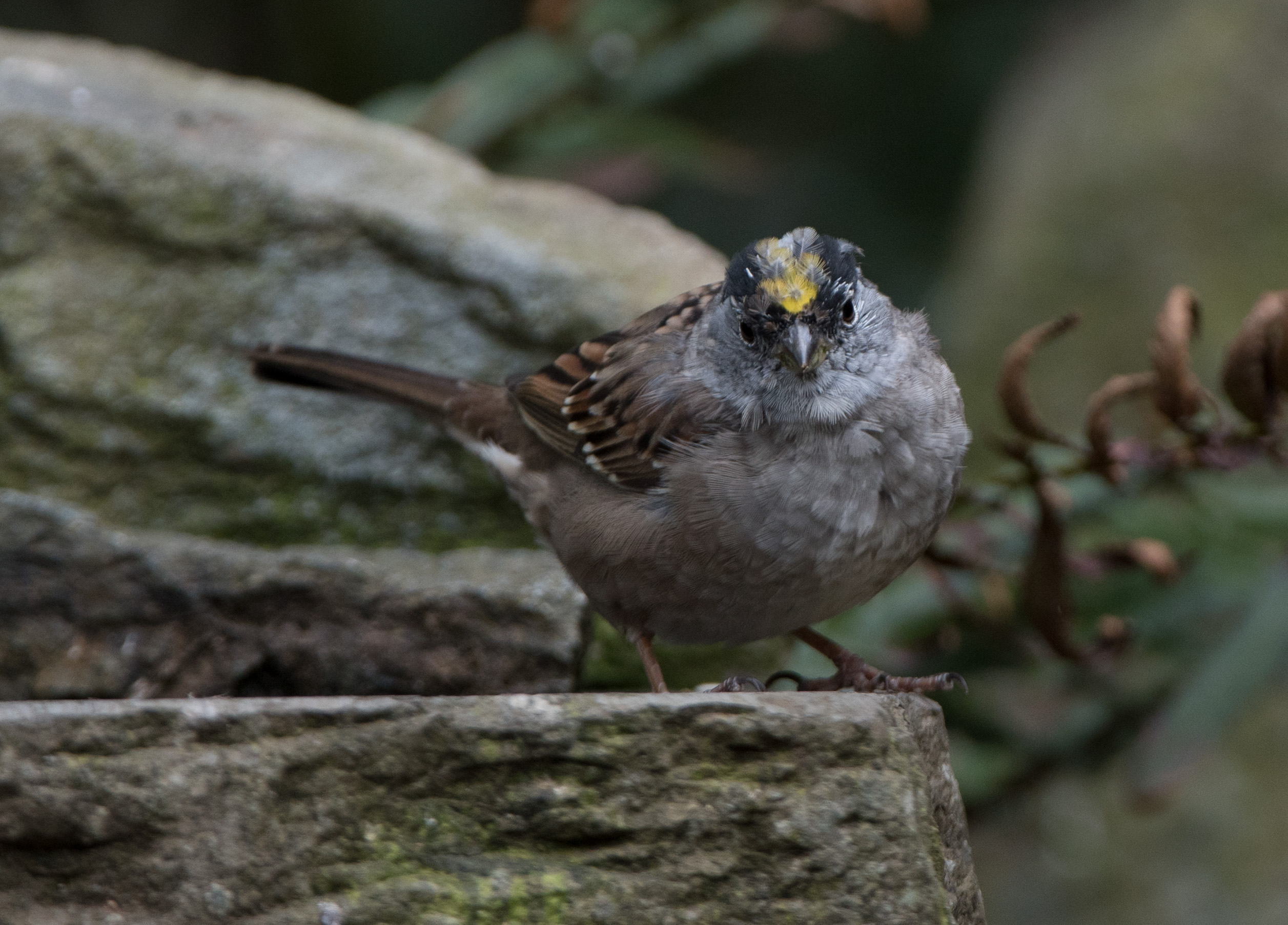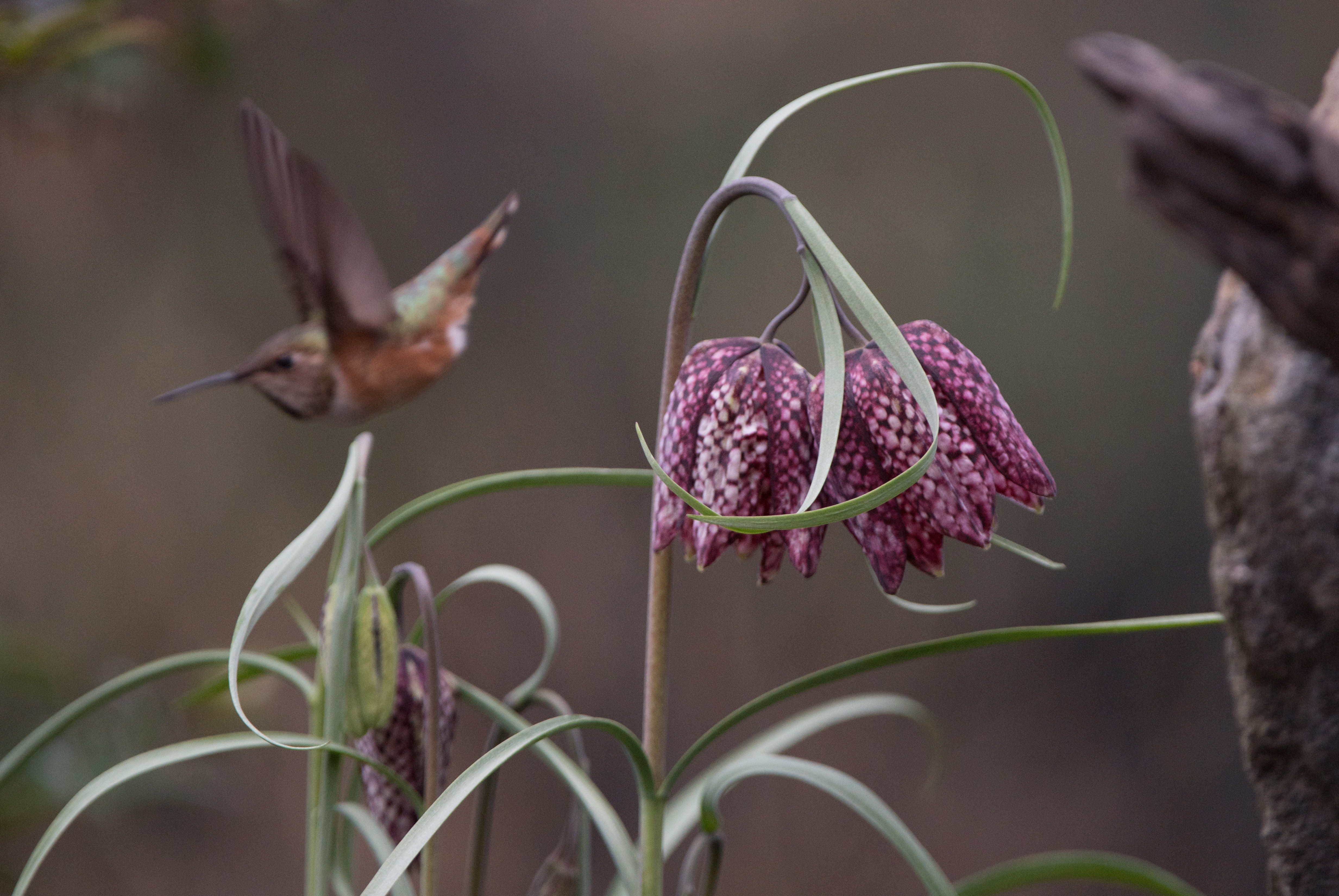We had another migrant first arrival on Saturday, March 31. I saw the first Turkey vulture soar over our house. It’s a bird with which we are very familiar due to our Texas connections.
We also had a visit today (April 1) from an accipiter, but I didn’t get a long enough view to ascertain if it was the same Cooper’s hawk that I photographed in the yard last September and published on my blog.
Meanwhile I’ve got a few more photos of yard visitors, taken within the past day or two.
I mentioned in the last blog or two that I had had trouble photographing a female Bushtit in the yard this spring, but I finally photographed one across the yard. Note the yellow eye which identifies the bird as a female.
At least one male Varied thrush is still visiting the yard and eating hulled sunflower seed that I scatter on the ground a couple of times a day. I’m still trying to figure out why these thrushes eat seed! I expect that the thrush will be heading to the mountains for breeding season any day now, but maybe they sense that there’s been a late snow and are waiting for a better food supply.
This is the single, prominent White-crowned sparrow that we’ve had in the yard for the past couple of weeks, and that I was having a difficult time photographing. Last season we had a mating pair but if I’m not mistaken they only fledged a Brown-headed cowbird.
We still have over a half dozen Golden-crowned sparrows that have wintered over and haven’t left for their summer breeding grounds further north. I’m fairly certain that it’s the most we’ve ever had. The birds are beginning to morph into their breeding plumage and I’m showing you this photo to illustrate how pitiful they now look. This one is apparently a male as you can see the beginning of a bright golden crown and the black lines on either side of the crown. Just about the time they get their full breeding plumage they disappear for the summer and early fall, returning in late fall for the winter.
And finally a bit of serendipity. I was photographing a lily in the yard when it had a quick visit from a male Rufous hummingbird. At my lens’ magnification, only a short distance is in sharp focus. Unless the bird is photographed broadside, usually some part of the bird is out of focus. So even though this hummingbird was only a few inches from the lily, both couldn’t be in focus. Since I was actually photographing the lily, the image of the hummingbird is what suffered. But I thought it an interesting photo!

